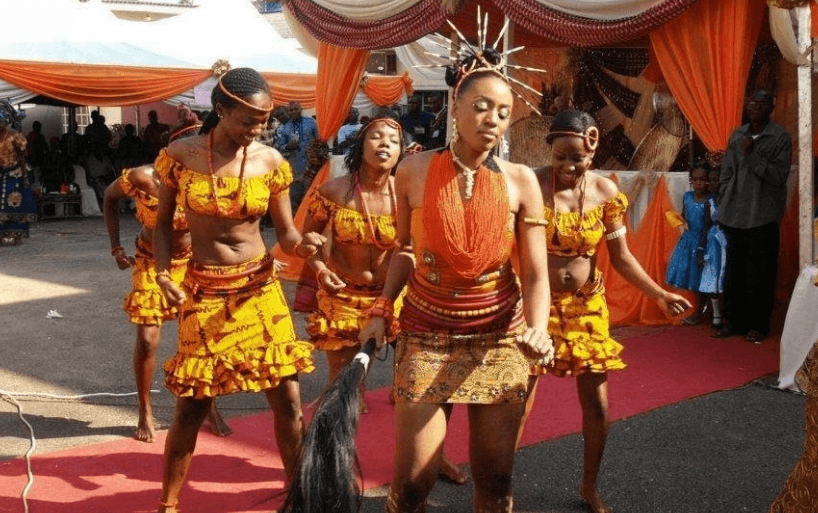Traditional Igbo Attire: The Western culture has infiltrated into the society, changing the way we speak and dress. Every culture has a distinct way of dressing. This is their heritage and says a lot about their origin. Igbo dressing has struggled to maintain its balance amongst many conflicting cultures. There has been a lot of changes from ancient trends to the modern day trend yet Igbo attire stands out and can easily be identified.
There is meaning behind every single piece of clothing that makes up the Igbo attire and style. The combination is not random but conveys deep roots. One of the most disputable fragments of Igbo clothing is the traditional red cap. The red color, in this case, symbolizes the pain and suffering Igbo people went through for their community to progress. If you look at the history, you’ll also learn that only the most outstanding members of the tribe, mainly chiefs, were considered honorable enough to wear the red cap. In present days, however, red chief caps are often worn by anyone who likes the style.
Traditional Igbo Attire – Igbo Men
Dressing Principles:
- The attire of titled holders and chiefs is different from that of the untitled men.
- The colors include red, white, black, and in some cases clearly distinct patterns, which basically represent the image of an adult lion.
- The walking stick is a necessary part of the men attire and no traditional Igbo outfit is complete without it.
- Igbo traditional men’s clothing is also adorned with white and red bangles. This accessory is for all the members of that society (both male and female).
- The two constant parts of the traditional clothing for Igbo men are the trousers, which are usually not too tight and not too wide, and the shirt, which is called Isiagu. The Isiagu shirt looks very similar to another famous Nigerian piece of clothing, the Dashiki. A traditional Igbo men outfit can be complete with only these two parts, but often Igbo men add an Agbada over the Isiagu. The well decorated and embroidered Agbada is also an ideal choice for a groom who wants to follow the ancient Igbo wedding traditions.
- When it comes to fabrics, there is no special fabric designated or created for Igbo men’s clothing. Any manner or a variety of clothing can be used as far, as it is printed, embroidered or decorated in the colors and patterns that the Igbo culture permits.
- The traditional caps are made only of wool, whether the caps are meant for the titled members of society or not.
The majority of the Igbo men still wear the traditional outfit on a daily basis. Yet, some people prefer to save the beautiful traditional Igbo clothing for special occasions. Despite how often you’d like to wear the traditional outfit – the main principles for the look remain the same.
Traditional Igbo Attire – Igbo Women
Igbo attire for women has remarkably advanced from the ancient times when women used to carry babies on their backs with a strip of cloth which was divided into two with a knot at her chest. Those days, Igbo women did not cover their upper chest area. The baby-carrying technique is still being practiced nowadays by many ethnic groups across Africa along with the Igbo people who still carry their babies this way.
Young maidens could easily be pointed out with their short waist-wrapper and colorful beads around their waists and necks. In modern Igbo society, Igbo women now wear a puffed sleeve blouse along with two wrappers and a headscarf. Accessories like necklaces are also worn as a beautiful accessory to the outfit.
Igbo beads
The Coral Colored Beads or Precious Coral Beads are unique accessories that go with Igbo attire for both men and women. This type of accessory has come through the history of Igbo and it’s still widely used by the people.
In Igbo culture, coral beads are the symbol of royalty or a chieftaincy title. There were even special designs of coral beads that only chiefs wore. The beads made of coral are not just a decoration, this element has a crucial meaning and is believed to have special powers (ase) to protect from any curse. It is divine. That is why these beads were worn by chiefs and why brides and grooms choose this type of decoration for their wedding attire.
